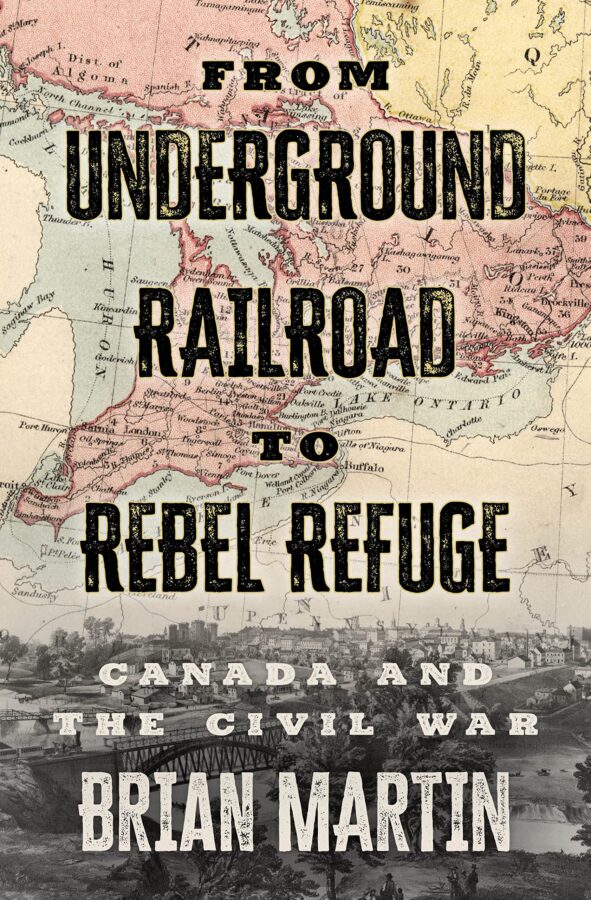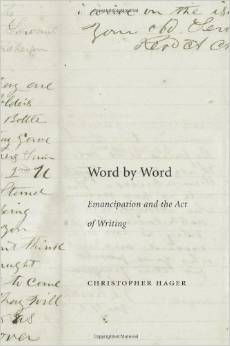From Underground Railroad to Rebel Refuge: Canada and the Civil War by Brian Martin. ECW Press, 2022. Paper, ISBN: 978-1-77041-638-3. $19.95.
 Josiah Henson, believed by many to be the inspiration for Uncle Tom in Harriet Beecher Stowe’s Uncle Tom’s Cabin, was born into slavery in Charles County, Maryland, in 1789. He and his family fled to Upper Canada (present day Ontario) in 1830, crossing the Niagara River, beyond the reach of slave catchers and U.S. laws. Henson helped establish the Dawn Settlement near the town of Dresden, just over the U.S.-Canadian border. He published a memoir of his life in 1849, two years before Uncle Tom’s Cabin appeared serialized in an abolitionist weekly. Henson lived out his life at the Dawn Settlement and died there in 1883.
Josiah Henson, believed by many to be the inspiration for Uncle Tom in Harriet Beecher Stowe’s Uncle Tom’s Cabin, was born into slavery in Charles County, Maryland, in 1789. He and his family fled to Upper Canada (present day Ontario) in 1830, crossing the Niagara River, beyond the reach of slave catchers and U.S. laws. Henson helped establish the Dawn Settlement near the town of Dresden, just over the U.S.-Canadian border. He published a memoir of his life in 1849, two years before Uncle Tom’s Cabin appeared serialized in an abolitionist weekly. Henson lived out his life at the Dawn Settlement and died there in 1883.
Henson’s story is just one of many that Brian Martin includes in his enjoyable, anecdote-filled history of Canada’s unique relationship with the United States during the Civil War era. Henson was hardly the first enslaved person to come to Canada from the United States. At the end of the American Revolution, about 4,000 Black people were living in Upper Canada, many coming with their Loyalist masters. But Sir John Graves Simcoe, the British governor of Upper Canada, initiated legislation that eventually abolished slavery in 1793—the first jurisdiction in the British Empire to do so. All Blacks residing there were free and accepted as citizens. They could be found clustered in both integrated communities and all-Black settlements, owning land, paying taxes, voting, and serving in the local militia. Between 1830 and 1850, according to Martin, the Underground Railroad helped “an estimated 30,000 to 40,000 Black freedom seekers follow the North Star to reach British North America, which many called Canaan, the promised land.” After the passage of the Fugitive Slave Act in 1850, an additional 20,000 enslaved people fled to safety in Canada. More than 60,000 previously enslaved people, then, successfully lived and worked in freedom in Canada on the eve of the Civil War.
Martin’s anecdote-filled history of the role Canada played in the years prior to, during, and after, the Civil War, is clearly written with a Canadian audience in mind. He includes a lot of history that may be new to our cousins north of the border, but that a U.S. audience will find familiar. That’s not to say that there’s little of value in Martin’s book. He colorfully details the lives of many freedom seekers as they made new lives and contributed to the communities where they settled. Slaveholding oligarchs in the South staunchly maintained that Black people were an inferior race and could not function in a free society. Black Canadians in the antebellum years gave the lie to this racist assertion.
The middle chapters focus on Canadians fighting for both the Union and the Confederacy. Martin’s stories could form the basis for numerous theses and dissertations. While exact numbers are hard to come by, Martin estimates that about 40,000 Canadians served in the Civil War and around 14,000 died. Four Canadians became Union generals, and 29 won the Medal of Honor.
Among the many stories Martin tells is that of Francis Wafer, who interrupted his medical studies at Queens University in Kingston, Ontario, to join the 108th New York Infantry. His first patients were casualties at the Battle of Chancellorsville. In the spring of 1861, 19-year-old Franklin Thompson crossed the Detroit River from Windsor, Ontario, and signed up with the 2nd Michigan Infantry, where he was made a field nurse. It turns out his name was actually Sarah Edmonds. Thompson, or Edmonds, served throughout the war and in 1884, after her true identity was revealed, was granted an honorable discharge from the army by Congress and, according to Martin, “was provided a modest cash bonus and pension, the first military pension ever awarded a woman.” Then there was Anderson Abbott, the first Canadian-born Black doctor. His parents, originally from Alabama, were prominent in Toronto society. Rejected as an assistant surgeon, he became a medical cadet with a Black regiment and served in hospitals in Washington and Arlington, Virginia. Martin claims that he accompanied Mrs. Lincoln’s seamstress and friend Elizabeth Keckley to the Peterson House on the night of April 14, 1865, and was in the room when President Lincoln died.
Canadians also fought for the Confederacy, although in much smaller numbers. According to Martin, “five young men named Boucher were among the first Canadians to enlist in the Confederate Army.” They traveled more than 800 miles from just south of Windsor, Ontario, to Arkansas to enlist as privates in Company E of the 16th Arkansas Infantry. Dr. Soloman Secord, originally from Kincardine on the shores of Lake Huron, moved to South Carolina for his health. When the war broke out, he joined the 20th Georgia Infantry as regimental surgeon. After the war he returned to Kincardine and practiced medicine until he died in 1910. His friends raised money to erect a monument in his memory. According to Martin, “The monument in downtown Kincardine remains the only monument in Canada dedicated to someone who fought for the South during the Civil War.”
Post-Civil War Canada also became a safe haven for some of the South’s most easily recognizable enslavers, just as it served as a refuge for their property just a few years before. Some ex-Confederates stayed only a few months, while some stayed a few years. A few never returned to their former homes. Confederate Secretary of War John C. Breckenridge occupied a house in Niagara, now Niagara-on-the Lake, as did James Mason, the Confederacy’s envoy to Great Britain. “At Christmas 1868, a general amnesty was proclaimed by President Andrew Johnson,” writes Martin, “and many of the Confederates in Niagara and elsewhere in Canada began returning home to see what remained there for them.” During Reconstruction, Canada also provided temporary refuge for some of the South’s unsavory leaders of the Ku Klux Klan, like Major J.W. Avery of South Carolina, who had a $60,000 bounty on his head. Dr. J. Rufus Bratton fled to Canada in 1872 and almost caused an international incident when he was abducted off the streets of London, Ontario, and spirited back to the United States to stand trial for Klan depredations. After the diplomatic row, Bratton returned to London and established a successful medical practice.
“Had the attic refuge offered by Canada not been available,” writes Martin, “the history of the Civil War and the years preceding, during, and after it might have been different.” Canada did indeed play a unique role during troubled times for its southern neighbor. Brian Martin describes that role with insight and energy.
Gordon Berg has published numerous reviews and articles in Civil War periodicals. He writes from Maryand.
